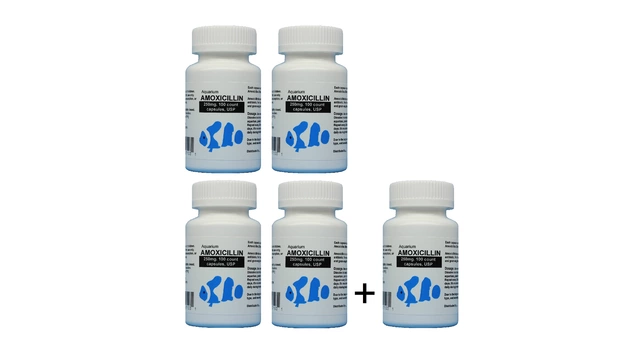Diuretic Selector Tool
Medical Condition
Priority Concerns
Existing Conditions
When doctors need to treat fluid overload or high blood pressure, they often start looking at diuretics. Frumil is a fixed‑dose combination of amiloride and furosemide that targets both sodium reabsorption and water excretion. But is that mix the best choice for you? Below you’ll find a side‑by‑side look at Frumil and the most common alternatives, so you can decide which pill fits your health situation.
Quick Take
- Frumil pairs a potassium‑sparing diuretic (amiloride) with a loop diuretic (furosemide) for strong fluid removal and less potassium loss.
- Hydrochlorothiazide is cheap and works well for mild hypertension, but it’s weaker on severe edema.
- Spironolactone adds hormone‑blocking benefits, useful in heart‑failure and certain acne cases.
- Torsemide and bumetanide are more potent loop diuretics with longer half‑lives than furosemide.
- Indapamide offers thiazide‑like blood‑pressure control with a better metabolic profile.
How Frumil Works
Frumil blends two mechanisms:
- Amiloride is a potassium‑sparing diuretic that blocks epithelial sodium channels in the distal tubule. By reducing sodium uptake, it limits water reabsorption while keeping potassium from being flushed out.
- Furosemide is a loop diuretic that inhibits the Na⁺‑K⁺‑2Cl⁻ transporter in the thick ascending limb of the loop of Henle. This creates a massive diuretic effect, pulling large volumes of fluid out of the body.
The combination lets you get the powerful fluid‑removing power of a loop diuretic while mitigating the classic potassium‑wasting side effect. That balance is why many clinicians prescribe Frumil for patients with congestive heart failure who need strong diuresis but can’t afford frequent potassium supplements.
When Doctors Choose Frumil
Typical scenarios include:
- Chronic heart‑failure with persistent peripheral edema.
- Resistant hypertension where a loop diuretic is indicated but potassium loss must be minimized.
- Kidney disease patients who are already on a low‑potassium diet.
Because Frumil is a fixed‑dose tablet, dose‑titration is less flexible than prescribing amiloride and furosemide separately. If you need a very specific ratio, your doctor might still split the drugs.
Alternative Diuretics to Consider
Below is a snapshot of the most common alternatives. Each belongs to a different drug class, which means different strengths, side‑effect profiles, and best‑use cases.
- Hydrochlorothiazide is a thiazide diuretic that inhibits Na⁺/Cl⁻ reabsorption in the distal convoluted tubule. It’s the go‑to for mild to moderate hypertension.
- Spironolactone is a potassium‑sparing aldosterone antagonist used in heart failure and hyperaldosteronism. It also helps with hormonal acne.
- Torsemide is a loop diuretic with better bioavailability and a longer half‑life than furosemide. It’s useful when once‑daily dosing is preferred.
- Bumetanide is a potent loop diuretic that works at lower milligram doses than furosemide. Often chosen for patients who need tight fluid control.
- Indapamide is a thiazide‑like diuretic with additional vasodilatory properties. It’s a good fit for patients who can’t tolerate thiazide‑induced metabolic changes.
Side‑by‑Side Comparison
| Medication | Class | Primary Mechanism | Typical Dose | Pros | Cons |
|---|---|---|---|---|---|
| Frumil | Combination (Potassium‑sparing + Loop) | Blocks ENaC & inhibits Na⁺‑K⁺‑2Cl⁻ transporter | 5mg/40mg once daily (adjustable) | Strong diuresis + reduced potassium loss | Fixed ratio limits dose flexibility |
| Hydrochlorothiazide | Thiazide | Inhibits Na⁺/Cl⁻ reabsorption in distal tubule | 12.5‑50mg daily | Cheap, well‑studied, good for hypertension | Weaker on severe edema, can cause hypokalemia |
| Spironolactone | Potassium‑sparing (Aldosterone antagonist) | Blocks aldosterone receptors | 25‑100mg daily | Protects heart remodeling, treats acne | Can raise potassium too high, menstrual irregularities |
| Torsemide | Loop | Inhibits Na⁺‑K⁺‑2Cl⁻ transporter | 5‑20mg daily | Longer half‑life, better oral absorption | More expensive than furosemide |
| Bumetanide | Loop | Inhibits Na⁺‑K⁺‑2Cl⁻ transporter | 0.5‑2mg daily | Effective at low doses, rapid onset | Risk of ototoxicity at high doses |
| Indapamide | Thiazide‑like | Inhibits Na⁺/Cl⁻ reabsorption + vasodilation | 1.5‑2.5mg daily | Better metabolic profile than classic thiazides | May cause photosensitivity, less potent diuresis |

Pros and Cons at a Glance
Below is a quick rundown that helps you match a drug to your priorities.
- Frumil: Ideal when you need powerful fluid removal but must guard against low potassium. Not great if you need precise dose adjustments.
- Hydrochlorothiazide: Best for cost‑sensitive patients with mild‑to‑moderate hypertension. Falls short on heavy edema.
- Spironolactone: Perfect for heart‑failure patients who also benefit from aldosterone blockade. Watch for hyperkalemia.
- Torsemide: Favoured when a once‑daily loop diuretic is convenient. Slightly pricier.
- Bumetanide: Goes for patients needing a strong loop effect but who can’t swallow larger pills. Requires careful monitoring for ear toxicity.
- Indapamide: Good for patients who can’t tolerate thiazide‑induced sugar or lipid changes. Less aggressive for edema.
Choosing the Right Diuretic - Decision Checklist
Use this checklist during your next doctor visit:
- What’s the primary problem? (Hypertension, fluid overload, heart‑failure, hormonal issues)
- Do you have a history of low potassium or are you on potassium‑rich foods?
- Is cost a major factor?
- Do you need once‑daily dosing for convenience?
- Any kidney or liver concerns that limit certain drug classes?
Answering these questions narrows the field. For example, if you’re battling stubborn swelling and have normal potassium, a pure loop like torsemide might beat Frumil. If you’re already on a potassium‑sparing regimen, adding Frumil could be redundant.
Safety, Interactions, and Monitoring
All diuretics carry a risk of electrolyte imbalance. Here’s what to watch for with each:
- Frumil - monitor serum potassium and creatinine after 1‑2 weeks.
- Hydrochlorothiazide - watch for low potassium, uric acid spikes (gout risk).
- Spironolactone - check potassium and renal function monthly; beware of menstrual changes.
- Torsemide & Bumetanide - ensure adequate hydration; ototoxicity risk at high doses.
- Indapamide - monitor blood sugar and lipid levels if you’re diabetic.
Always tell your pharmacist about over‑the‑counter NSAIDs, lithium, or ACE inhibitors, as they can magnify diuretic side effects.
Real‑World Example: Jane’s Journey
Jane, a 68‑year‑old with chronic heart failure, was on furosemide 40mg twice daily. She kept developing low potassium, causing muscle cramps. Her cardiologist switched her to Frumil 5mg/40mg once daily. Within two weeks, her edema improved and labs showed potassium back in the normal range, letting her avoid potassium supplements. When Jane later needed tighter diuresis during a flare‑up, the doctor added a low dose of torsemide for extra push, illustrating how combination therapy can be fine‑tuned.
Bottom Line
If you need a strong diuretic and are worried about potassium loss, Frumil offers a built‑in safety net. For pure hypertension, cheaper thiazides work just fine. When you want the longest‑lasting loop effect, torsemide is the clear candidate. Always match the drug’s strength, dosing flexibility, and side‑effect profile to your personal health picture.
Frequently Asked Questions
What is the main advantage of Frumil over taking amiloride and furosemide separately?
The fixed‑dose combo saves you from having to coordinate two pills and reduces the chance of missing the potassium‑sparing component, which helps keep blood potassium stable.
Can Frumil be used for simple high blood pressure without fluid overload?
It can, but most guidelines suggest starting with a thiazide like hydrochlorothiazide first because it’s cheaper and effective for primary hypertension.
Is there a risk of potassium overload with Frumil?
Yes, especially if you’re also taking potassium supplements or have renal impairment. Regular blood tests are essential.
How does torsemide compare to furosemide in terms of dosing frequency?
Torsemide has a longer half‑life, so many patients can stay on a once‑daily schedule, whereas furosemide often needs twice‑daily dosing for consistent effect.
Can I switch from Frumil to a single loop diuretic if I develop high potassium levels?
Yes, your doctor can stop the amiloride component and continue furosemide or another loop diuretic, but the change should be done gradually with labs to monitor potassium.







Mayra Oto
September 28, 2025 AT 06:02